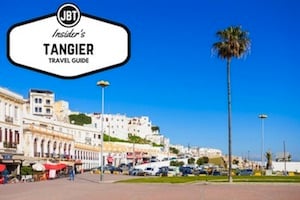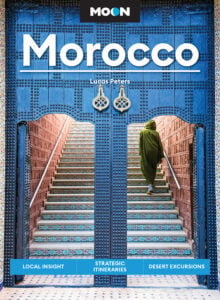Most people do not realize that the Sahara Desert is not just sand and rolling dunes. Only about twenty-five percent of the Sahara, which is about the size of the United States, is sand. The rest of the Sahara is volcanic hills, gravel plains, rock formations, and some scraggly vegetation. It is the home, surprisingly enough, of over 300 bird species and animals including mongooses, snakes, jackals, deer, hares, foxes, and baboons. It is also wonderful to explore on camel and enjoy sleeping beneath the open sky.
There are many Sahara Desert trips to be taken. Depending on the itinerary you choose, it will determine the length of your tour. You can start and end in Marrakesh, go off the beaten track to start and just simply allow you to enjoy the wonders of what is imagined to be a desolate area of Morocco. You can travel into the dunes of Erg Chigaga from M’hamid and even plan a day trip to Essaouira. No matter which itinerary you choose, a trip into the Sahara Desert is one that you will not want to miss.
While there are a variety of itineraries that could be designed for your trip through the Sahara Desert, starting in Marrakesh is the easiest way to get moving. Spend a night in the city, enjoy a hardy breakfast, and then travel through the High Atlas Mountains where you can stop for lunch and enjoy the wild and beautiful scenery of this area of Morocco. From there you can travel to Zagora and spend the night in a bed and breakfast styled after a traditional riad. The hotel has a beautiful garden for relaxing as well as a swimming pool for you to cool down in before turning in for the night.
From Zagora, you will then head into M’hamid where you will pick up your camel mounts and start into the desert itself. M’hamid is perched at the edge of the Sahara Desert and the area is rocky and barren. The entire area is known as Erg Chigaga and it is considerably different from Merzouga, M’hamid’s sister city. You will be fitted by professional camel drivers and once you have mounted your trusty desert steed, you will head out across the desert. Dinner will be under the stars and you will get to sleep under the night sky in a nomadic Bivouac tent.
From the dunes of the Sahara you can travel on to Skoura. This area of Morocco is called the Valley of 1000 Kasbahs and it is found in a huge palm grove. The uninhabited houses and buildings in Skoura can be explored. It is suggested that the valley be toured on foot, mule, or via a 4×4 vehicle. The Amerhildil Kasbah is the most magnificent site in the area and it was once owned by the Glaouis family, a ruling family of Morocco. Here is where you can spend the night as the structure has been converted into a beautiful guesthouse.
The UNESCO World Heritage Kasbah of Ait Benhaddou is the next place on the itinerary to visit after Skoura. You will probably recognize the Kasbah from movies such as ‘The Mummy’ and ‘Gladiator’. You can also visit the fairly new city of Ouarzazate, also known as Ozzywood, and it is the home of Atlas Studios. Here you can tour the many different movie sets that are located at the studios and it presents visitors with plenty of photo opportunities while on the movie sets themselves. When you leave Ait Benhaddou, you will climb back into the High Atlas Mountains and return to Marrakesh. The drive is about four hours through some of the most spectacular scenery in Morocco.
Whether you choose to leave Morocco after your trip through the Sahara Desert is your choice and there is plenty to do and see in both Marrakesh and other cities throughout the country.
Enjoying a camel ride through the desert, however, is a once in a lifetime experience, and anyone taking this particular tour will definitely have a photo opportunity that you will not want to miss. You will have the unique chance of seeing that the Sahara Desert is more than dunes and sand for miles and miles. It is an ecosystem all its own, dangerous, wild, and to be explored. Spending the night under the stars where they seem close enough to touch is an amazing adventure, and if you are able to take a trip to Morocco a camel journey across the Sahara Desert should not be missed.
By Sam Mitchell








